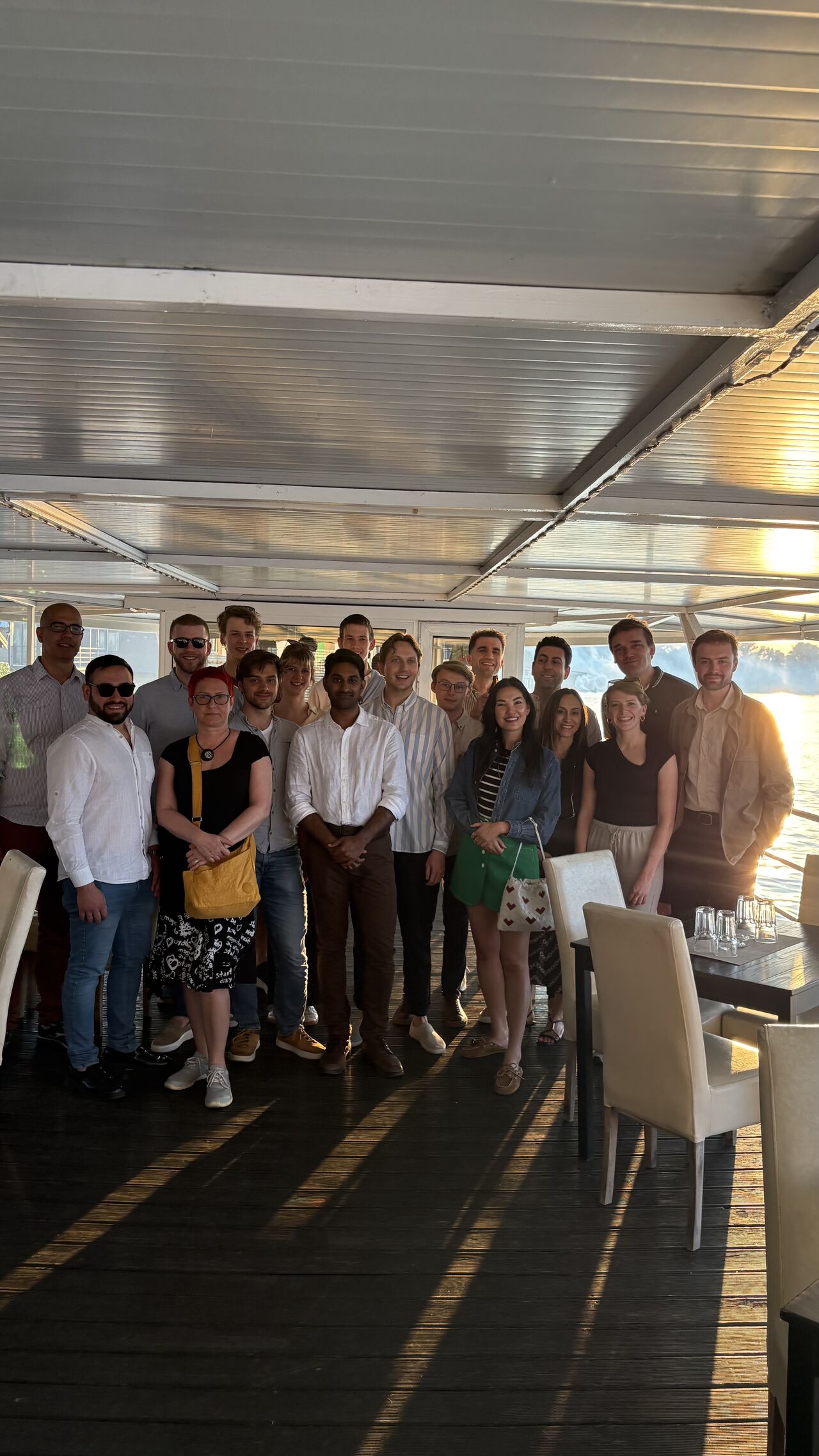On June 12th and 13th, the VASCUL-AID consortium convened in Belgrade for its second annual meeting—two highly productive days marked by insightful discussions, collaborative planning, and tangible progress across all project work packages. A special thanks to Igor Končar and the local team for the excellent organization and warm hospitality!
Day 1: Collaboration, Strategy, and Connection
The first day began with a constructive session alongside representatives from the Technology Transfer Office (TTO) of the consortium partners, focusing on innovation pathways and aligning commercialization strategies across institutions. This was followed by in-depth technical discussions centered around Work Packages 2 to 4. These sessions allowed teams to deep-dive into data standardization, platform development, and imaging tools—showcasing major achievements and mapping out next steps.
The day concluded with a relaxed evening on the river—a social dinner on a boat that provided the perfect setting for informal networking, strengthening the bonds within our multidisciplinary team.
Day 2: Progress and Prospective Plans
The second day kicked off with focused sessions on Work Packages 5 to 7, exploring ongoing efforts in biomarker analysis, AI-human interaction, and the ethical-legal framework (HELSI). One of the highlights was a dynamic roundtable discussion with industry and academic partners, addressing challenges and opportunities in enabling clinical translation and forging future collaborations.
Key Achievements Presented
During the meeting, several major project milestones and deliverables were shared:
- Data Infrastructure: A fully functional standardized data infrastructure is now in place, including a comprehensive data dictionary and standardized outcome sets. We greatly appreciate the contributions from partners who shared external datasets.
- Platform Extension: The VASCUL-AID platform now supports prospective data collection, including integration of wearable device inputs.
- AI Imaging Tools: Advanced AI tools for the automated analysis of CTA images have been developed, with the first predictive models for abdominal aortic aneurysm (AAA) growth and rupture incorporating anatomical and hemodynamic features.
- Omics Data Progress: Pilot studies using biobank samples have successfully launched high-throughput proteomics, lipidomics, and genomics analyses.
- Patient Communication: Initial prototypes for AI-driven visualization tools and patient communication materials were presented, alongside the launch of the patient-facing app and physician dashboard.
- Ethical & Legal Framework: The HELSI framework—a comprehensive ethical and legal guideline for implementing AI in healthcare—was developed based on insights from VASCUL-AID.
Looking Ahead
As we move into the next phase starting July 2025, we are excited to begin inputting standardized prospective data and initiate validation through clinical studies. The progress so far has laid a strong foundation for impactful, patient-centered innovation.
We would like to thank all participants for their engagement and valuable input, especially during the Translational Board meeting, which continues to shape the direction of our work and its real-world relevance.

